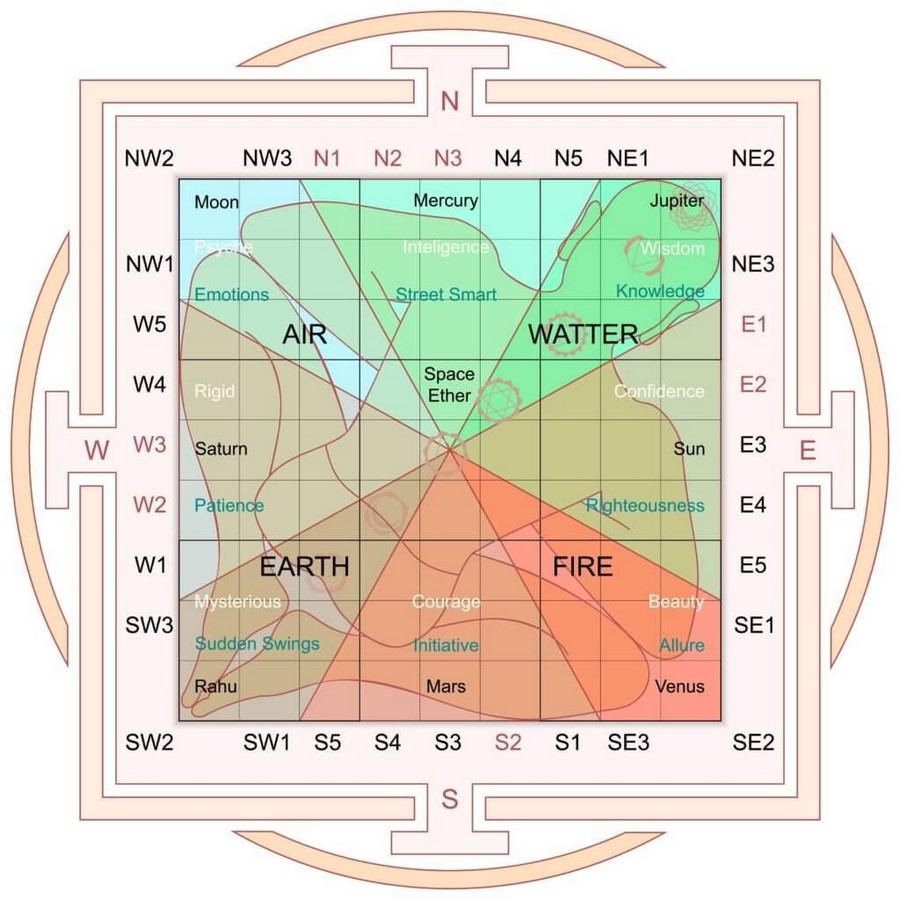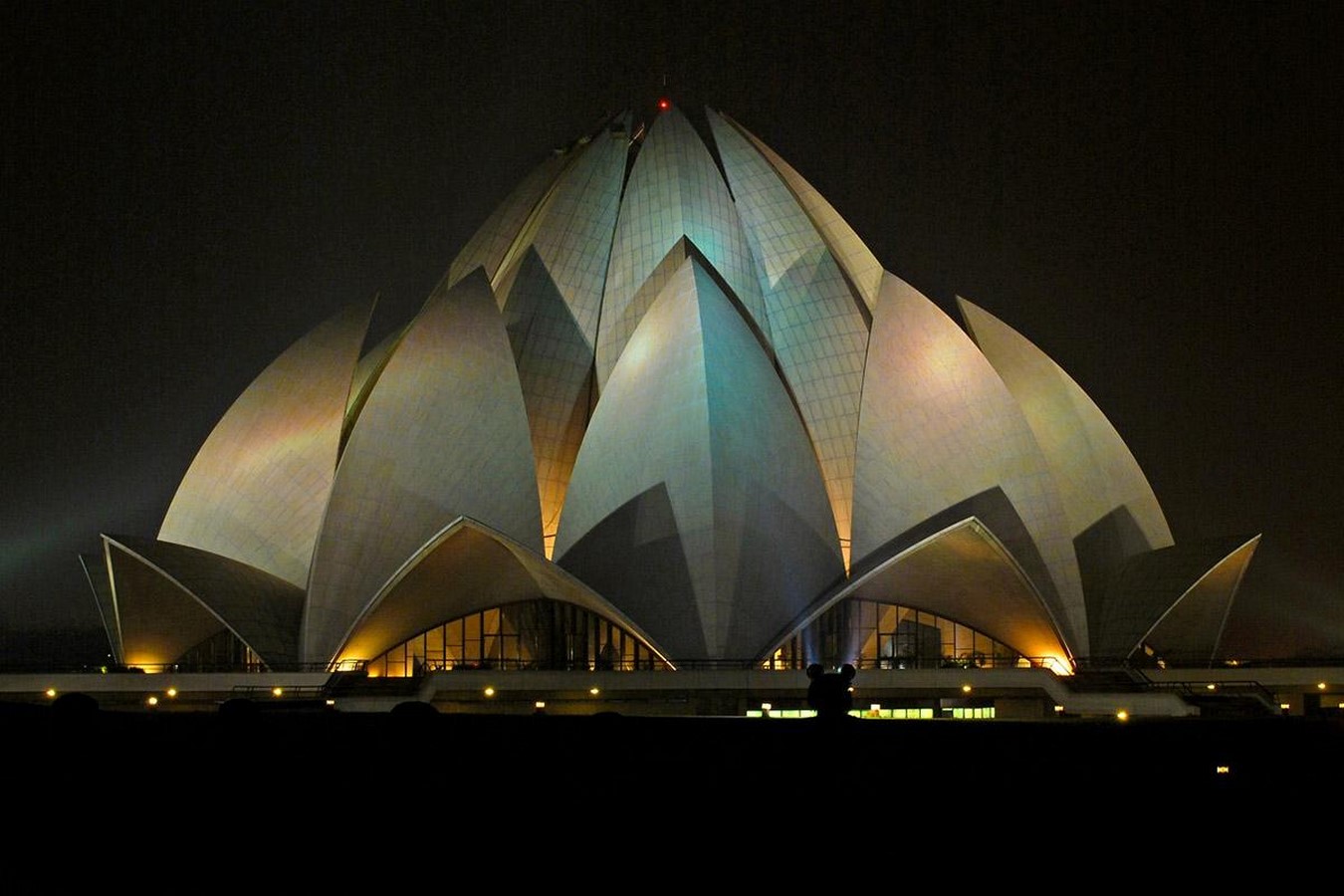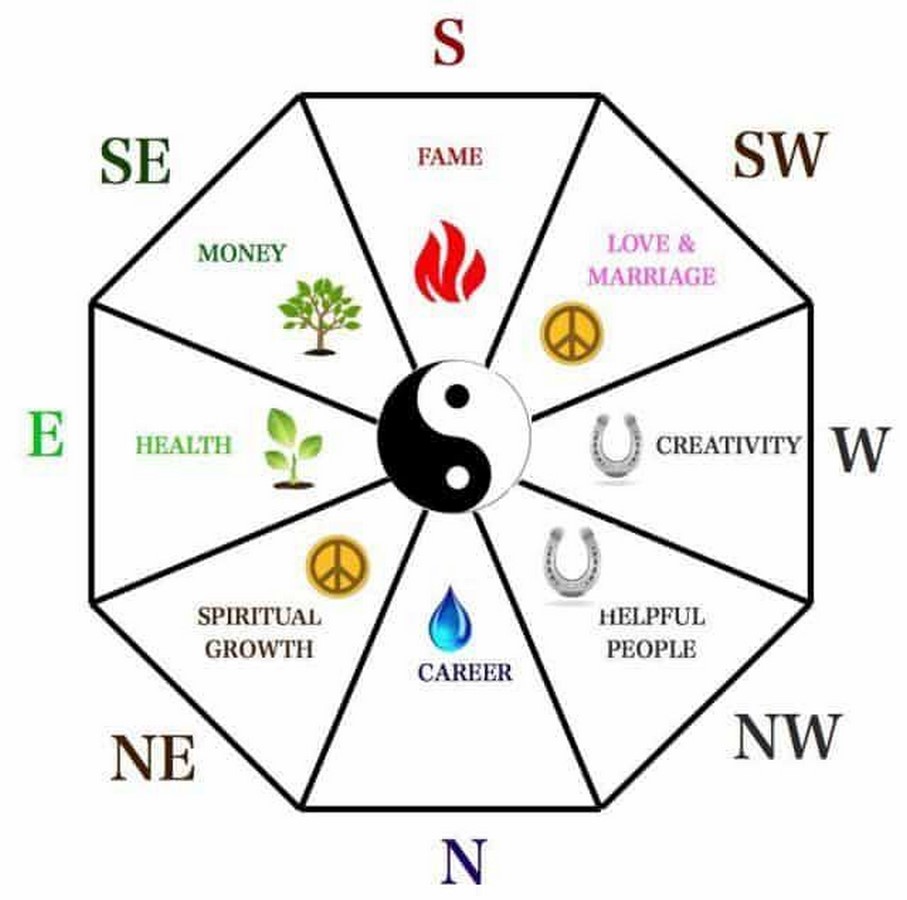The same laws, regulations, and ordinances that apply to other subjects also apply to Vaastu. The aim of the traditional Indian philosophy known as vaastu shastra is to create spaces that are most optimally suited to the function and purpose of a place, habitation, or company. Saint Vishwakarma is supposed to have written the first book on this subject of Vaastu Shastra some three thousand years ago. Living and working in such an environment makes people feel more inspired and creative, which also promotes success on the social and financial fronts. If it is against the Vaastu principles and elements, it will be a home or place of problems, anxiety, uncertainties, and lack of harmony. Vaastu shastra should therefore be incorporated into the design of a home to sustain good health and pleasure.
Vastu Shastra
Vastu Shastra means “the science of architecture” in the direct translation. Vaastu Shastra includes elements of design, layout, measures, ground preparation, organization, and spatial geometry that are then used in the construction of buildings to support the peace, well-being, and wealth of the residents.

It integrates geometric patterns, symmetry, and directional alignments to create living spaces compatible with nature. It also connects science, art, astronomy, and astrology. It is the science that combines five elements of the universe to maintain a balance between man and materiality. These five elements are regarded as “Paachbhootas”, with earth, water, air, fire, and space being those elements.
Origin of Vaastu Shastra
During the Vedic period in India, Vastu Shastra originated. It originated in Sthapatyaveda which is part of Artharvaveda, emerging as the platform for understanding the relation between man and building, which is referred to as architecture in today’s time.
Components of Vastu Shastra

The components are earth, fire, air, water, and space. The earth which is also known as Prithvi, says that the internal organs of the human body get the impact of the magnetism of Earth. Water is about hydration which is necessary for survival. Air, to sustain energy inside, is about ventilation. Fire, to have proper natural lighting, and at last space is the draw energy from.
Importance of Orientation
The orientation of buildings is very important in vastu shastra. According to Vastu principles, a building should be facing east to benefit from the energizing effects of the rising sun. A building facing west may disrupt the energy flow, which could hurt the occupants. In contemporary practice, several buildings have been designed based on the principles of Vastu Shastra. One of the known examples is the Lotus Temple of Delhi. The design is based on Vastu principles of harmony with nature, balance, and symmetry. One of the main religions in the world is represented by each petal of the temple. As a result, it represents the pinnacle of religious peace.


Benefits of Vastu-based Architecture
Vastu principles can be used to design structures, which has various advantages. For instance, a structure planned according to Vastu Shastra will encourage the flow of good energy, increase productivity and well-being, and bring success and prosperity. Being in a room that was created utilizing Vastu principles can also promote emotional well-being, lower stress, and improve physical health. Vastu shastra improves functional working as well as human emotional health. It promotes a healthy and prosperous life for those who incorporate ideas of vastu shastra in physicality impacting the overall energy intangible.
Relevance of Vastu Shastra in Architecture
The Vastu Shastra has its traditional beliefs that it promotes harmonious and healthy living for people. Secondly, it has positive psychological impacts based on how its design is derived from the principles of Vastu Shastra. Vastu also influences aesthetic architecture in terms of materials, colors, shapes, and forms.
In modern architecture, increased emphasis is placed on the use of evidence-based design and environmentally and energy-efficient construction methods. Even though some Vastu Shastra concepts may be in line with these notions, architects, and designers are more likely to follow current construction codes and international standards for sustainability, safety, and accessibility.
However, the idea of Vastu shastra and its relevance is a matter of individual and cultural beliefs of an individual too. It depends on the individual, group or organization to incorporate the principle of Vastu shastra in architectural design.
Today, Modern Indian architecture continues to be greatly influenced by Vastu Shastra concepts. Ancient ideas have been inspired by modern design, creating stunning and harmonious places that support health and energy for its residents in a positive way. Vastu-compliant building offers enormous advantages, and its acceptance is rising daily as a result in today’s time. To develop efficient, aesthetically pleasing, and emotionally balanced buildings, contemporary architects and builders can take inspiration from Vastu Shastra and apply its principles to their work.
Reference:
- What is Vastu? (no date) What is Vastu,Vastu Science,Vaastu Architecture,Benefits of Vastu. Available at: https://www.vaastu-shastra.com/what-is-vastu.html (Accessed: 13 October 2023).
- Vaastu Shastra | Sushant University Blog. 3 Nov. 2022, sushantuniversity.edu.in/blog/vaastu-shastra/. Accessed 13 Oct. 2023.
- “Vastu Shastra- a Complete Guide to the Ancient Science of Architecture.” SY Blog, 8 Oct. 2021, www.squareyards.com/blog/vastu-shastra-vastuart.
- space, concept. “Vastu Shastra: The Importance in Modern Indian Architecture.” Medium, 12 July 2023, conceptspacein.medium.com/vastu-shastra-the-importance-in-modern-indian-architecture-f9ad083b3117#:~:text=The%20orientation%20of%20a%20building. Accessed 13 Oct. 2023.















